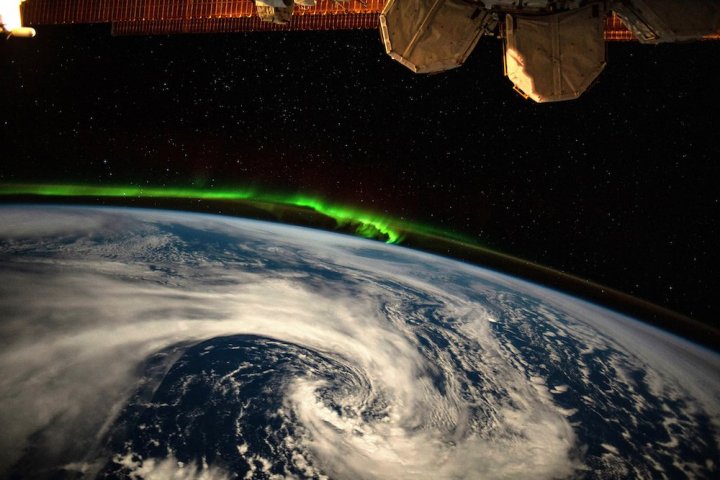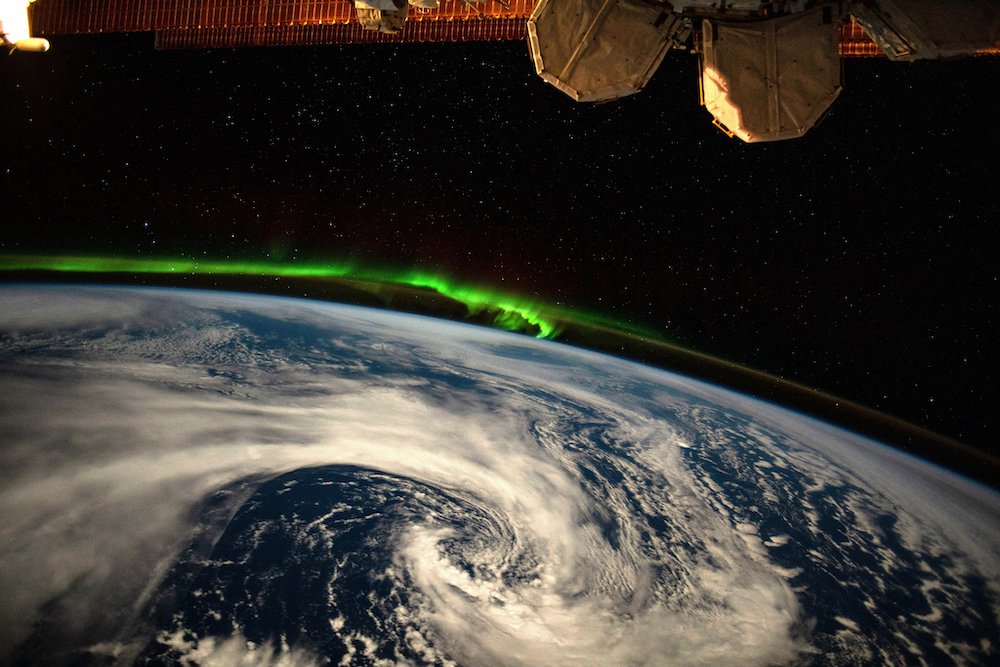[ad_1]
Italian astronaut Samantha Cristoforetti has posted an astonishing picture of Earth that she captured just lately from the Worldwide House Station (ISS).

Whereas we’ve been handled to loads of beautiful Earth pictures taken from the area station’s seven-window Cupola observatory through the years, few of the pictures present our planet illuminated by moonlight. Even higher, Cristoforetti’s image additionally options an aurora, a dramatic swirl of cloud 250 miles under, and even a part of the area station.
Cristoforetti, who arrived on the ISS in April for a six-month keep, shared the attractive picture along with her a million followers on Twitter on Tuesday, August 16.
“In these vibrant nights across the full moon you’ll be able to see options on the planet floor even at evening,” she mentioned within the tweet. “From the Cupola the view is ‘the wrong way up’ — flying above clouds looks like trying up on the sky from Earth. Cloud gazing and stargazing on the identical time!”
Cristoforetti’s submit was accompanied by a tweet from area fanatic Huub Eggen, who had rotated the image to point out Earth from a extra acquainted angle.
In these vibrant nights across the full Moon you’ll be able to see options on the planet floor even at evening. From the Cupola the view is “the wrong way up” – flying above clouds looks like trying up on the sky from Earth. Cloud gazing and stargazing on the identical time! https://t.co/NyB2TQ7oIu pic.twitter.com/i7eXdO4RtE
— Samantha Cristoforetti (@AstroSamantha) August 16, 2022
“Curls of nature on this picture from a time lapse taken by @AstroSamantha from ISS on 10Aug2022 over the southern Indian Ocean (-44.6 83.4). Low strain space and aurora,” Eggen wrote in his tweet.
The area station travels round Earth at a zippy 17,000 mph, leading to an orbit each 90 minutes or so. That implies that if an astronaut spent a complete day gazing out of the Cupola, they’d witness 16 sunrises and 16 sunsets, although with full moons solely occurring as soon as a month, few of the nightscapes will likely be as beautiful as this one.
For extra wonderful Earth pictures, take a second to marvel at these fantastic photographs compiled to have a good time this 12 months’s Earth Day again in April.
Editors’ Suggestions
[ad_2]

